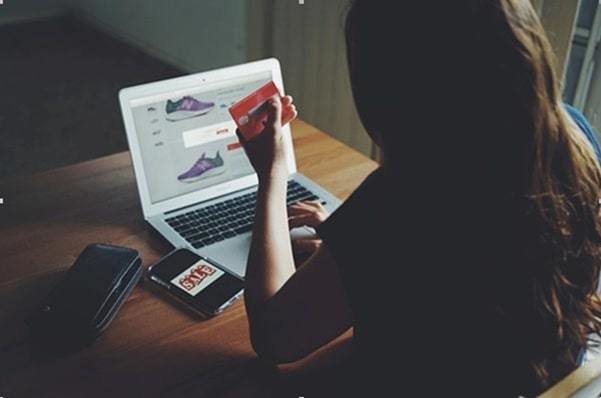Featured Image Caption: Woman using Smartphone for Online Shopping
Jump to read...
Have you ever found yourself daydreaming about owning your own online store – one where you can make money from anywhere in the world? The good news is that with a Shopify Drop Ship Store, that dream is more attainable than ever.
Gone are the days when you needed a huge budget to rent a warehouse or stock tons of inventory. Dropshipping lets you sell products directly to your customers without worrying about packaging, shipping, or storage. That means you can focus on growing your business while suppliers handle the logistics.
In this guide, we’ll walk you through everything you need to know to launch your own Shopify Drop Ship Store from picking the perfect products to setting up your store and driving sales. Let’s get started!
What is Dropshipping Anyway?
Dropshipping is a fulfillment model where you sell products that are shipped directly from a third-party supplier to your customer. Instead of ordering inventory upfront and worrying about where to store it, you simply forward orders to your supplier who takes care of the rest.
Here’s why that’s a game-changer:
- No big upfront investment in stock
- No need to manage a warehouse
- Flexibility to sell a wide range of products
When you combine dropshipping with Shopify’s easy-to-use platform, you’ve got a powerful business model at your fingertips.
Why Use Shopify for Your Drop Ship Store?
Shopify is one of the top e-commerce platforms for a reason – it’s designed to make setting up and managing your store a breeze, even if you’re not super tech-savvy. Here’s why Shopify is perfect for your Shopify Drop Ship Store:
- User-Friendly Interface: No coding required! You can build a professional looking store with drag-and-drop tools.
- App Integrations: Shopify’s app store connects you with top dropshipping suppliers like DSers, Spocket, and Zendrop.
- Secure Payments: Shopify’s built-in payment gateways make it easy to accept credit cards and other payment methods.
- Scalability: Whether you’re selling one product or one thousand, Shopify can grow with your business.
- 24/7 Support: Need help at 2 AM? Shopify’s support team has your back.
Step 1: Get Clear on Your Niche
Before you start building your Shopify Drop Ship Store, it’s essential to choose the right niche. A niche helps you stand out in a crowded market and attract loyal customers.
Ask yourself:
- What are you passionate about?
- What products are trending right now?
- there a problem you can help solve for your customers?
Tip: Tools like Google Trends, TikTok, and Amazon’s Best Sellers can help you spot trends and find winning products.
Step 2: Set Up Your Shopify Account
Once you’ve chosen your niche, it’s time to bring your vision to life:
- Sign Up for Shopify: Head to Shopify.com and start your free trial.
- Pick a Plan: Choose the plan that fits your budget and goals.
- Select a Theme: Shopify offers a variety of free and paid themes. Pick one that looks good on both desktop and mobile.
- Customize Your Store: Add your logo, colors, and essential pages (About Us, Contact, FAQs, Privacy Policy). This helps build trust with potential customers.
Step 3: Connect with Dropshipping Apps
Here’s where the magic happens: Shopify’s app store makes it super easy to connect with dropshipping suppliers. Popular apps include:
- DSers: Great for importing products from AliExpress.
- Spocket: Offers high-quality products from US and EU suppliers.
- Zendrop: Fast shipping times and private labeling options.
These apps let you search for products, add them to your store, and automate order fulfillment—all from your Shopify dashboard.
Step 4: Choose the Right Products
The success of your Shopify Drop Ship Store depends on selling products that people actually want. Here are some tips for picking winning items:
- Solve a Problem: Products that address a pain point often sell better.
- Appeal to Emotions: Think gifts, hobbies, or lifestyle products.
- Check Demand: Use tools like Google Keyword Planner or social media trends to see what’s hot.
- Test, Test, Test: Start small and see how products perform before going all-in.
Step 5: Market Your Store
Building a beautiful store is just the beginning. Now it’s time to bring in customers! Here’s how:
- Social Media: Use platforms like Instagram, Facebook, and TikTok to showcase your products and connect with your audience.
- Content Marketing: Start a blog sharing tips, guides, or product reviews related to your niche.
- Paid Advertising: Consider Facebook Ads or Google Ads to reach targeted customers quickly.
- Email Marketing: Build an email list to nurture potential buyers and share promotions.
Pro Tip: Offer discounts or limited-time offers to encourage first-time buyers.
Step 6: Manage and Grow
Once your Shopify Drop Ship Store is up and running, focus on delivering great customer service and optimizing your store:
- Respond Promptly: Answer customer inquiries quickly to build trust.
- Streamline Shipping: Keep an eye on supplier performance and shipping times.
- Analyze Data: Use Shopify’s analytics to see which products sell best and where your traffic comes from.
- Scale Up: Once you’ve found winning products, invest more in advertising and consider expanding your product range.
Final Thoughts
Starting a Shopify Drop Ship Store is one of the most exciting (and accessible) ways to dive into the world of e-commerce. It gives you the freedom to work from anywhere, be your own boss, and sell products you’re passionate about all without the headaches of managing inventory.
Remember, success doesn’t happen overnight. Take the time to choose the right products, build a Shopify Drop Ship Store that truly represents your brand, and craft a marketing plan that attracts the right customers. With dedication and the right strategies, you can turn your dream of a Shopify Drop Ship Store into a thriving reality.
By Emma Emily
who is a qualified content writer with experience in writing on a variety of subjects. She has written a lot of content on dropship business and us based dropshippers services as well.
Member since August, 2025
View all the articles of Emma Emily.




















Leave a Reply